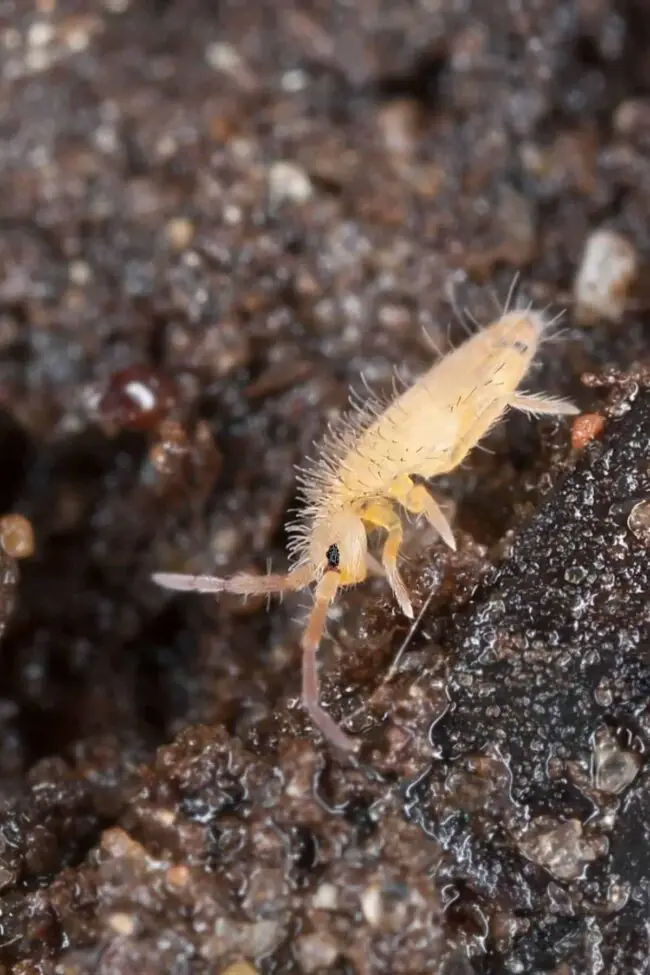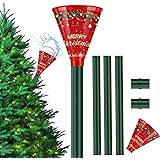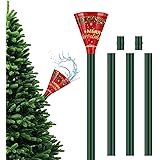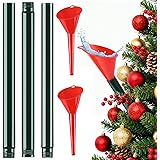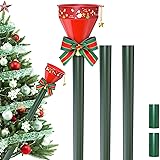Looking to create a captivating terrarium that’s buzzing with life? Wondering what bugs to put in your terrarium to add a touch of nature’s magic? Well, look no further! In this article, we’ll explore the fascinating world of terrarium insects and help you choose the perfect critters to bring your miniature ecosystem to life.
Whether you’re a seasoned terrarium enthusiast or just starting out in this exciting hobby, we’ve got you covered. So, let’s dive right in and discover what bugs to put in a terrarium to create a thriving and balanced microcosm.
What Bugs to Put in a Terrarium
Terrariums are a wonderful way to bring a slice of nature into your home. These miniature ecosystems allow you to create a lush and self-sustaining environment for plants, mosses, and even small animals. Among the various living organisms that can thrive in a terrarium, bugs play a vital role.
Not only do they add an element of intrigue and natural balance, but they also contribute to the overall health and longevity of the terrarium. In this article, we will explore the different types of bugs that are ideal for a terrarium and the benefits they bring to the ecosystem.
Read More: About How To Quarantine Aquarium Plants
The Importance of Bugs in Terrariums
Bugs, or more accurately, invertebrates, play a crucial role in maintaining the delicate balance within a terrarium. These tiny creatures help with nutrient cycling, decomposition, and pest control. They break down organic matter, such as fallen leaves and dead plants, into smaller particles, which enriches the soil.
Additionally, some bugs are natural predators that keep pest populations in check, ensuring the overall health of the terrarium inhabitants.
1. Springtails
When it comes to bugs for your terrarium, springtails are on the top of the list. These tiny, wingless insects are excellent decomposers and contribute to the breakdown of dead plant material. Springtails also help prevent mold and fungus growth by consuming the organic matter that would otherwise serve as a breeding ground for these unwanted invaders. Their ability to jump allows them to quickly move around the terrarium and reach areas that may be hard to access.
– Scientific name: Collembola
– Appearance: Springtails are usually white, gray, or black in color and measure only a few millimeters in length.
– Habitat: They thrive in moist environments, making terrariums an ideal home for them.
– Diet: Springtails primarily consume decaying plant matter, fungi, and bacteria.
2. Isopods (Sow Bugs and Pill Bugs)
Isopods, commonly known as sow bugs or pill bugs, are another beneficial addition to a terrarium. These small crustaceans are excellent at breaking down organic matter and contributing to nutrient cycling. Isopods are detritivores, meaning they primarily feed on decaying plant material and leaf litter. They are also known to eat dead insects, helping to prevent the buildup of pest populations within the terrarium.
– Scientific name: Isopoda
– Appearance: Isopods have a segmented body and a hard exoskeleton. They are typically gray or brown and measure around 1 centimeter in length.
– Habitat: Isopods prefer moist environments and can often be found in damp soil or under rocks and logs.
– Diet: Isopods consume decaying plant matter, dead insects, and other organic material.
3. Mites
While mites may not be the most glamorous critters, they play a crucial role in the terrarium ecosystem. These tiny arachnids are detritivores and help break down organic matter, contributing to the nutrient cycling process. Mites are also an important food source for other terrarium inhabitants, such as springtails and predatory mites. However, it’s essential to maintain a balanced population of mites, as they can become pests if their numbers get out of control.
– Scientific name: Acari
– Appearance: Mites vary in size and color, ranging from translucent to dark brown. They are typically smaller than 1 millimeter.
– Habitat: Mites can be found in various habitats, including soil, leaf litter, and moss.
– Diet: Mites feed on decaying plant matter, fungi, algae, and other microscopic organisms.
4. Beetles
Beetles add a touch of diversity and beauty to a terrarium. These insects come in a wide range of shapes, sizes, and colors, making them an intriguing addition to the ecosystem. While not all beetle species are suitable for terrariums, some smaller varieties can thrive in these enclosed environments. Beetles help with decomposition, feeding on dead plant material and contributing to nutrient cycling.
– Scientific name: Coleoptera
– Appearance: Beetles have a hard exoskeleton and can vary greatly in size, color, and shape. The most commonly kept beetles in terrariums are small and nondescript.
– Habitat: Beetles can be found in various habitats, including forests, grasslands, and even urban environments.
– Diet: The diet of beetles varies depending on the species, but many feed on decaying plant matter, fungi, and small invertebrates.
5. Springworms (Enchytraeids)
Springworms, also known as potworms or white worms, are often overlooked but can be a valuable addition to a terrarium. These small, thread-like creatures contribute to the breakdown of organic matter, helping to maintain a healthy terrarium environment. Springworms also serve as a food source for other terrarium inhabitants, such as carnivorous plants and certain beetle species.
– Scientific name: Enchytraeidae
– Appearance: Springworms are tiny, white or translucent worms, measuring only a few millimeters in length.
– Habitat: They thrive in moist environments and can be found in soil, leaf litter, and decaying organic matter.
– Diet: Springworms primarily consume decomposing plant matter and microorganisms.
Choosing the Right Bugs for Your Terrarium
When selecting bugs for your terrarium, it’s essential to consider several factors to ensure a healthy and balanced ecosystem.
- Compatibility:
Different bugs have different environmental preferences. Ensure that the bugs you choose have similar moisture and temperature requirements as the plants and other inhabitants of your terrarium.
- Size:
Consider the size of your terrarium and the available space for the bugs. Avoid introducing large beetles or insects that may overcrowd the ecosystem.
- Balance:
Aim for a diverse range of bug species to promote a balanced ecosystem. This helps prevent any single insect population from dominating and potentially causing harm to other inhabitants.
- Sustainability:
It is crucial to maintain a sustainable population of bugs in your terrarium. Overpopulation can lead to competition for resources or the depletion of certain food sources. Regular monitoring and occasional population adjustments may be necessary.
Incorporating bugs in your terrarium can significantly enhance its health and beauty. The inclusion of springtails, isopods, mites, beetles, and springworms contributes to nutrient cycling, decomposition, and pest control within the miniature ecosystem. By selecting the right bugs and maintaining a balanced population, you can ensure the long-term success and sustainability of your terrarium.
Remember to always research the specific needs and requirements of each bug species before adding them to your terrarium, and enjoy the fascinating world of bugs in your own little slice of nature.
Read More: About How To Keep Grass Out Of Wildflowers?
Frequently Asked Questions (FAQs)
There are various bugs that can thrive in a terrarium. Some common bugs suitable for terrariums include:
Fruit flies
Springtails
Isopods (pill bugs, sow bugs)
Mites
Woodlice
No, not all bugs are suitable for terrariums. Certain bugs may require specific conditions or diets, making them unsuitable for terrarium environments. It is essential to research the needs and behaviors of bugs before adding them to a terrarium.
While spiders can be fascinating to observe, they are not recommended for terrariums. Spiders are typically solitary creatures that require larger spaces to hunt and thrive. They may also pose a risk to other bugs in the terrarium.
Yes, bugs in a terrarium require appropriate food sources to maintain their health. Different bugs have varying dietary requirements. For example, fruit flies feed on decaying fruit or vegetable matter, while springtails can consume organic debris and microorganisms.
The frequency of feeding bugs in a terrarium depends on the species and their individual needs. It is generally recommended to provide small amounts of food regularly, ensuring they have access to a fresh food source without allowing it to rot or accumulate excessively.
Yes, it is possible to have multiple bug species in a terrarium. However, it is crucial to consider their compatibility and requirements. Some bugs may exhibit territorial behaviors or have specific environmental needs, which could affect the well-being of other species.
The humidity level in a terrarium can be maintained by regularly misting the enclosure with water. Additionally, using a substrate that retains moisture and providing a shallow water dish can help maintain the desired humidity for the bugs.
The temperature range suitable for bugs in a terrarium depends on the species. It is essential to research the specific temperature requirements of the bugs you wish to keep. Most commonly kept terrarium bugs thrive in temperatures between 70°F and 85°F (21°C and 29°C).
Final Thoughts
In conclusion, when it comes to choosing which bugs to put in a terrarium, there are several options to consider. Ladybugs are a popular choice, as they help control aphids and other garden pests. Ants can also thrive in a terrarium, providing interesting activity and natural decomposition. Isopods, also known as pill bugs or sow bugs, assist in breaking down decaying matter and creating healthy soil.
Lastly, springtails are tiny insects that aid in maintaining moisture levels and preventing mold growth. By carefully selecting these bugs, you can create a balanced and thriving ecosystem within your terrarium. So, when planning your terrarium, don’t forget about the important role of the bugs!
Auto Amazon Links: No products found.
IPOOLTENG Christmas Tree Watering Funnel 3 Tube 1 Funnels 40 Inch - 3 Section Plastic Christmas Tree Funnel Waterer, Long Funnels for Watering Trees, Best Gifts for Your Parents to Water Tree
$15.53 (as of December 4, 2025 15:26 GMT +00:00 - More info- Product prices and availability are accurate as of the date/time indicated and are subject to change. Any price and availability information displayed on [relevant Amazon Site(s), as applicable] at the time of purchase will apply to the purchase of this product.
Christmas Tree Watering Funnel, Real Christmas Tree Water Long Funnel About 40 Inch, Trees Watering System for Water Indoor Outdoor
$15.99 (as of December 4, 2025 15:26 GMT +00:00 - More info- Product prices and availability are accurate as of the date/time indicated and are subject to change. Any price and availability information displayed on [relevant Amazon Site(s), as applicable] at the time of purchase will apply to the purchase of this product.
Christmas Tree Watering Funnel-39 Inch Adjustable 3-Section Long Funnel Spout Funnel Watering System Xmas Plant Watering Tool for Large Indoor Outdoor Plants
$14.59 (as of December 4, 2025 15:26 GMT +00:00 - More info- Product prices and availability are accurate as of the date/time indicated and are subject to change. Any price and availability information displayed on [relevant Amazon Site(s), as applicable] at the time of purchase will apply to the purchase of this product.
LANNEY 48.6 Inch Christmas Tree Watering Funnel, Extra Long Xmas Tree Waterer Spout with Metal Tube, Christmas Watering Device System Tool for Indoor and Outdoor Real Live Plant
$13.99 (as of December 4, 2025 15:26 GMT +00:00 - More info- Product prices and availability are accurate as of the date/time indicated and are subject to change. Any price and availability information displayed on [relevant Amazon Site(s), as applicable] at the time of purchase will apply to the purchase of this product.
Christmas Tree Watering System, 50 Inch Long Christmas Tree Watering Funnel Tool for Xmas Plant Watering Indoor Outdoor Large Plants
$16.99 (as of December 4, 2025 15:26 GMT +00:00 - More info- Product prices and availability are accurate as of the date/time indicated and are subject to change. Any price and availability information displayed on [relevant Amazon Site(s), as applicable] at the time of purchase will apply to the purchase of this product.
Snow Joe Premium Enviro Blend Ice Melt, Green-Coated Deicer Crystals, 50 lb - Safer Melter for Vegetation, Concrete & Metals w/ Anti-Corrosion Calcium Magnesium Acetate
$32.97 (as of December 5, 2025 17:01 GMT +00:00 - More info- Product prices and availability are accurate as of the date/time indicated and are subject to change. Any price and availability information displayed on [relevant Amazon Site(s), as applicable] at the time of purchase will apply to the purchase of this product.
Muddy Mat® Shown on TV Super Absorbent Microfiber Dog Door Mat for Muddy Paws, Non-Slip Washable Pet Rug, Quick Dry Chenille Entryway Carpet, Machine Washable Indoor Outdoor mat, Grey 30"x19"
$19.95 (as of December 5, 2025 17:01 GMT +00:00 - More info- Product prices and availability are accurate as of the date/time indicated and are subject to change. Any price and availability information displayed on [relevant Amazon Site(s), as applicable] at the time of purchase will apply to the purchase of this product.
Cuisinart 6.5" Cast Iron Smashed Burger Press, Round Flat Edge Grill Press for Crispy Smash Burgers, Burger Tool for Grill and Griddle Accessories, for BBQs and Tailgates
$24.99 (as of December 5, 2025 17:01 GMT +00:00 - More info- Product prices and availability are accurate as of the date/time indicated and are subject to change. Any price and availability information displayed on [relevant Amazon Site(s), as applicable] at the time of purchase will apply to the purchase of this product.
Zevo Flying Insect Trap Official Refill Cartridges - Fits Both Zevo Trap & MAX Indoor Fly Trap - Authentic Trap+Lock Technology to Catch Gnats, House & Fruit Flys (4 Official Refill Cartridges)
$13.47 (as of December 5, 2025 17:01 GMT +00:00 - More info- Product prices and availability are accurate as of the date/time indicated and are subject to change. Any price and availability information displayed on [relevant Amazon Site(s), as applicable] at the time of purchase will apply to the purchase of this product.
OLANLY Dog Door Mat for Muddy Paws 30x20, Absorbs Moisture and Dirt, Absorbent Non-Slip Washable Doormat, Quick Dry Chenille Mud Mat for Dogs, Entry Indoor Entryway Carpet for Inside Floor, Grey
$9.99 (as of December 5, 2025 17:01 GMT +00:00 - More info- Product prices and availability are accurate as of the date/time indicated and are subject to change. Any price and availability information displayed on [relevant Amazon Site(s), as applicable] at the time of purchase will apply to the purchase of this product.

